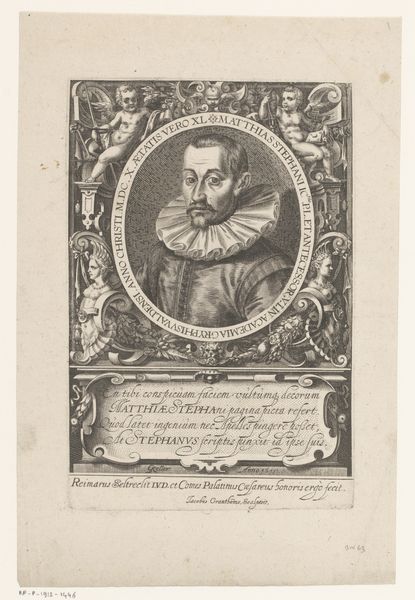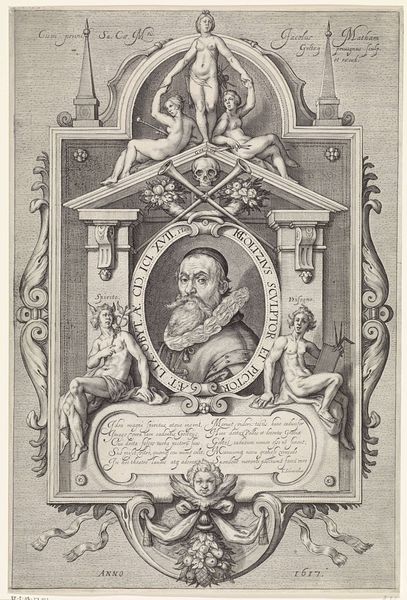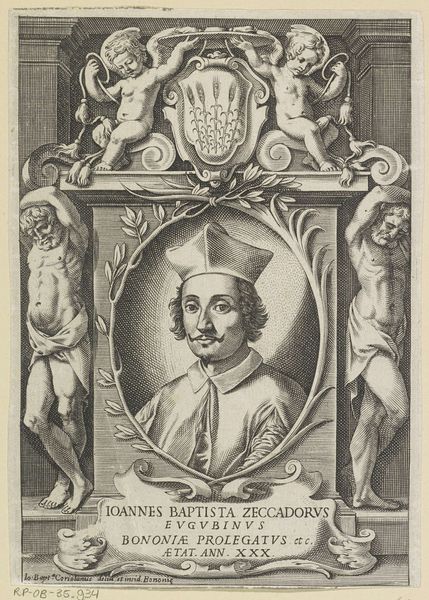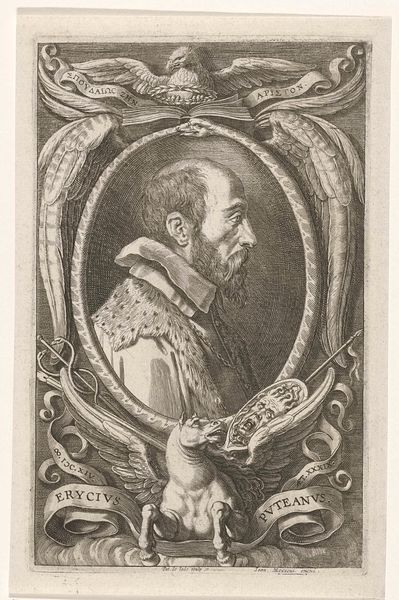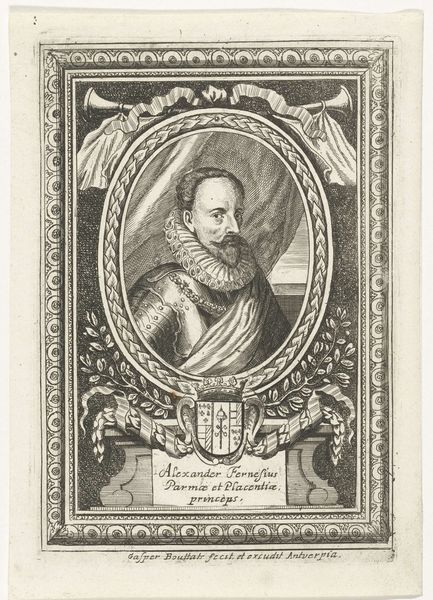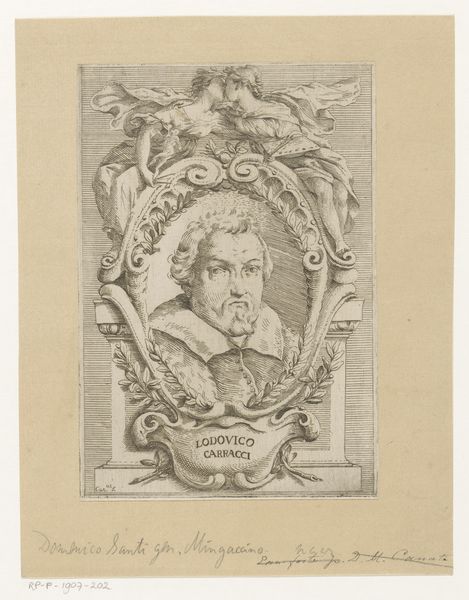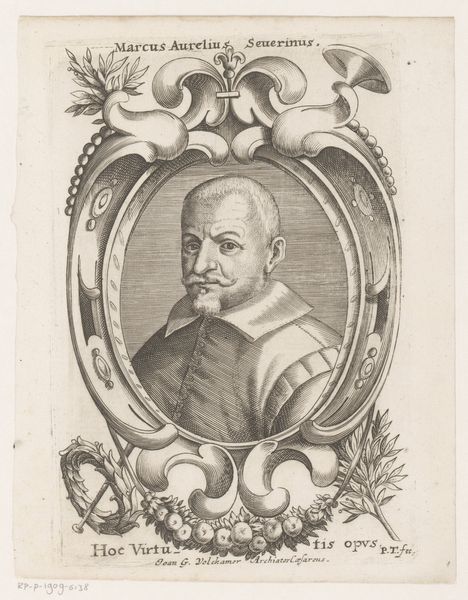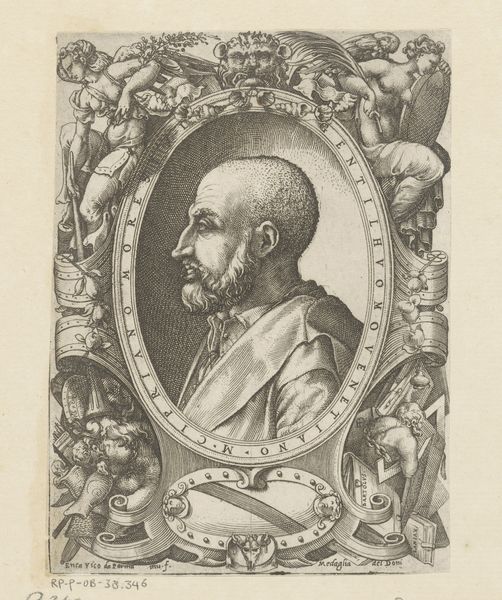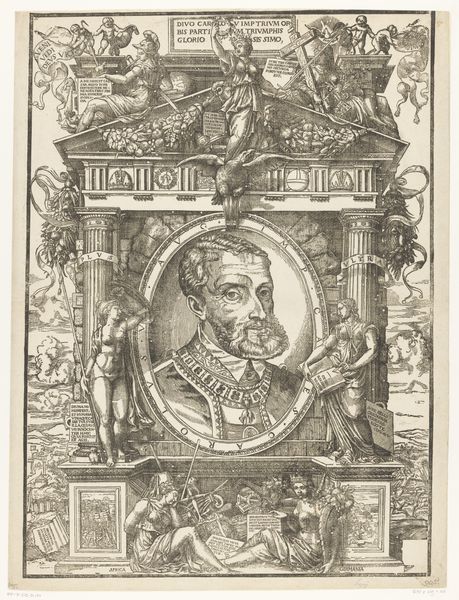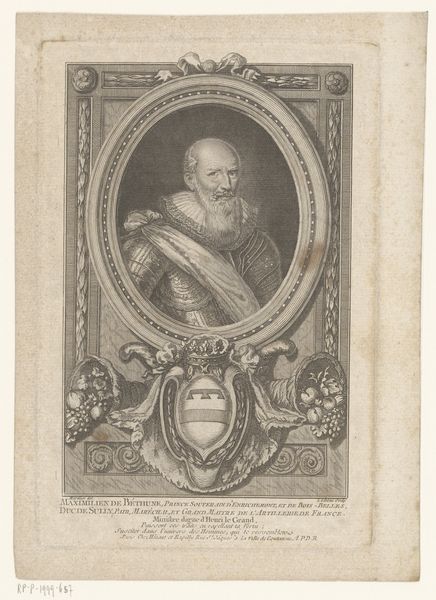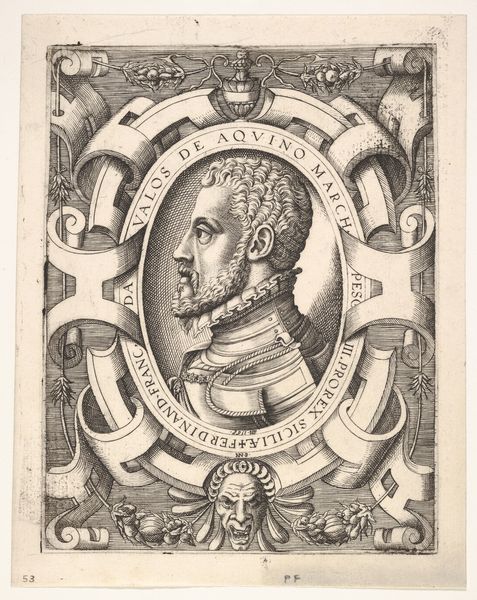
print, engraving
#
portrait
#
baroque
# print
#
old engraving style
#
academic-art
#
engraving
Dimensions: height 208 mm, width 162 mm
Copyright: Rijks Museum: Open Domain
Editor: Here we have "Portret van Fabio Albergati," an engraving from sometime between 1654 and 1661, currently at the Rijksmuseum, by Guillaume Chasteau. It's quite striking, especially the detail achieved in the face and clothing using just engraving. What stands out to you in this piece? Curator: What I find compelling is how this print reveals the social context of art production. Look at the materiality – the paper, the ink, the metal plate. These weren't just passively available; consider the labour involved in their making and the networks of trade required to obtain them. The engraver, Guillaume Chasteau, isn't just artist but also a skilled technician, bound to the means and modes of production that defined his era. Editor: That's fascinating! It never occurred to me to think about where the paper itself came from. Does the act of engraving, as opposed to, say, painting, influence its social impact? Curator: Absolutely. Engraving allowed for the mass production of images. Think about the implications – this image of Fabio Albergati could be disseminated widely, contributing to his reputation and social standing. Who commissioned it, and why? These kinds of questions pull us into the world of patronage and consumption of art within specific social hierarchies. How do you think such works shaped those hierarchies? Editor: It sounds like it helped reinforce them. A way to show status through reproducible, but still refined, artworks. I’ll definitely look at prints differently now. It's much more than just the image itself. Curator: Precisely. It's about unveiling the material and social relationships embedded within it.
Comments
No comments
Be the first to comment and join the conversation on the ultimate creative platform.
